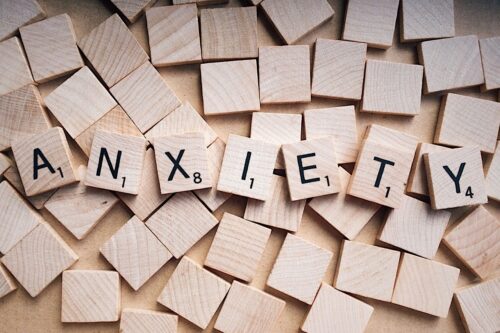Anxiety is felt by everyone once in their lifetime. However, teenagers and adolescents coping with it result in depressive symptoms, substance abuse, alcohol addiction, and social general psychological functioning difficulties.
EFT was developed by Dr. Leslie Greenberg, a distinguished researcher and a research professor at York University. He has received the distinguished research career award from the International Society of the American Psychological Association. EFT is based on the idea that emotion plays a central role in our lives, and it emphasizes the importance of practical emotional experience over cognitive self-understanding. The American Psychological Association also provides valuable guidelines and standards for various psychological therapies, including EFT.
Read more and find out how emotion-focused therapy really works and helps people out with Generalized Anxiety Disorder.
Emotion-focused therapy has been shown to be effective with clients who have generalized anxiety disorder. In an exploratory study of clients reported with generalized anxiety disorder, the present study found that those who received sample client-therapist dialogues fared better than those who did not.

Emotion-focused therapy used for generalized anxiety disorder, also called focusing-oriented psychotherapy, deals with clearing emotional blockage through focusing. It is an awareness practice that allows an individual to perceive bodily sensations of his feeling. This way, mental health professionals can address your issues, whether it be generalized anxiety disorder or any type of mental health problem, and help both relational aspects.
Emotion-focused therapy is a type of experiential psychotherapy that measures focusing helping people heal deep-rooted emotional pain and develop more adaptive ways to overcome maladaptive emotional schemes, facilitating emotional change. Based on the psychotherapy research of mental health practitioners, Emotion-focused therapy is based on healing therapeutic relationships, describing specific therapeutic exercises and in-depth experiential tasks.
“Anxiety is a reaction to a situation we perceive as stressful or dangerous,” Monique Reynolds, Ph.D., licensed clinical psychologist.
What Is Therapy And How Does It Help You?
Anxiety disorders do not occur instantly. It is usually a combination of different happenings in an individual’s life. Here are some examples of where it starts:
- Transitioning from a student to a working adult
- Illness of a person close to him
- Fear of separation from a partner, friend, or family
- Problems in school
- Transforming emotional pain
- Painful emotions
- Being bullied
When people experience these kinds of problems, it usually results in stress.
This severely debilitating disorder is characterized by panic attacks, stomachaches and headaches, emotional transformation, problematic emotion schemes, being uncomfortable in social situations, and experiencing unwanted thoughts and sensations. “You feel very much the way you do when in a dangerous situation…[but] there’s no real danger there,” clinical psychologist Robert Duff, Ph.D. says. If this happens, your disorder is not healthy.
EFT has been found to be particularly effective for treating mental health issues like generalized anxiety disorder (GAD), which is a highly treatment-resistant disorder, with maladaptive coping mechanisms, and intense feelings. Its objective is to counter negative treatment and provide profound emotional change as attested by distinguished research professor emeritus and mental health practitioners.
Ways an emotion-focused approach helps solve your GAD:

- First, your therapist asks if the client notices which parts of her body are affected once the mental disorders are experienced. It could be felt in their stomachs (whenever they feel butterflies inside), arms and legs (numbness), and chest (whenever their heart constricts). In some cases, they may feel it all over their body. This kind of embodied understanding is called “felt senses.”
- The client is asked to process his/her physical sensation bit by bit. They may describe it in detail, attach an image to portray it, or find the right names for appropriate definitions.
- Once processed, clients are assisted in making deep contact with the feeling of uneasiness. Deep contact refers to acknowledging the sources of your disorder, feeling the pain of these sensations, and identifying the factors that can ease it. This slow journey allows the bodily sensations to naturally shift into a deep inner resolution.
How Is It Different?
EFT or experiential therapy treats a patient as the center. It is one of the most recognized psychological treatment options for mental disorders like anxiety, according to the American Psychiatric Association. Therapists are available to guide all clients in processing inner feelings. Such professionals do not come up with interpretations of patients’ feelings or offer advice on how to overcome it.
Also, emotion-focused interventions do not adopt practices of other classic mindfulness approaches. This studied therapy allows all clients to experience any pain in their bodies to resolve it, as compared to acknowledging it and letting it go afterward, which is what the traditional mindfulness practice does.
EFT is an emotionally focused therapy that uses specific therapeutic exercises. Clients eventually learn to process the experiential aspect approach through an emotion-focused treatment. By helping clients maintain lasting coping mechanisms, they can avoid pervasive anxiety and employ EFT methods effectively.

This kind of approach caters to individuals experiencing darkness in their lives. In a good therapeutic relationship, therapists will not direct them to the light. Rather, their respective therapists will hold the lanterns that can guide them in finding paths to deep inner resolution.
You can also do this at home, as a self-help coping mechanism, before going to treatment for overcoming emotional avoidance, protective anger, the effects of technology on mental health, and other mental health disorders’ helpful and unhelpful aspects. “The other most effective thing we can do when we need to calm the nervous systems and our physiological threat response is to calm the breath. Controlled breathing has been shown to activate the parasympathetic branch of the nervous system which can help turn off the threat response,” according to Alicia H. Clark, PsyD.
Frequently Asked Questions
- What is the idea of the 3 3 3 anxiety rule?
- What are the stages of learning EFT?
- Is generalized anxiety disorder curable?
Generalized Anxiety Disorder (GAD) is not typically considered curable in the sense of complete eradication, but it is highly treatable. With the right combination of therapy, medications, lifestyle changes, and support, many individuals with GAD can effectively manage their symptoms and lead fulfilling lives. In addition to therapies like Cognitive Behavioral Therapy (CBT), Emotion-Focused Therapy for generalized anxiety disorder may also be beneficial for addressing the emotional aspects of GAD and helping individuals develop healthier emotional responses.
- How can you distinguish EFT from CBT?
EFT, also known as emotion-focused therapy, primarily targets improving emotional bonds in relationships and encourages the expression of emotions, while CBT focuses on changing dysfunctional thought patterns and behaviors through cognitive restructuring and behavioral techniques. EFT emphasizes emotions and relationships, often used in couples therapy, while CBT has a broader application, addressing various psychological conditions by modifying cognitive distortions.
- Which one of the psychological therapies is best for generalized anxiety disorder?
The choice of the best psychotherapy for Generalized Anxiety Disorder (GAD) varies among individuals. While Cognitive Behavioral Therapy (CBT) is a common first-line treatment, therapies like ACT, EFT, MBSR, IPT, and DBT can also be effective. Consulting with a mental health professional is essential to determine the most suitable psychotherapy based on individual needs and preferences.
- What are the two cognitive techniques that are utilized for managing GAD?
- Can cognitive behavioral therapy effectively treat GAD?
Yes, Cognitive Behavioral Therapy (CBT) is an effective treatment for Generalized Anxiety Disorder GAD. It equips individuals with practical tools to identify and challenge anxious thoughts, manage excessive worry, and develop coping strategies. CBT helps individuals regain control over their anxiety and lead more fulfilling lives by addressing the cognitive and behavioral aspects of GAD.
- Is EFT a branch of cognitive behavioral therapy?
- How long do assessing emotion-focused therapy sessions for GAD take?
- When do you see positive changes or treatment implications in EFT?
- What type of therapy is best for GAD?
- What are EFT interventions for anxiety?
- How do therapists treat GAD?
- What are some tips for overcoming GAD?
- How can I control my GAD without medication?